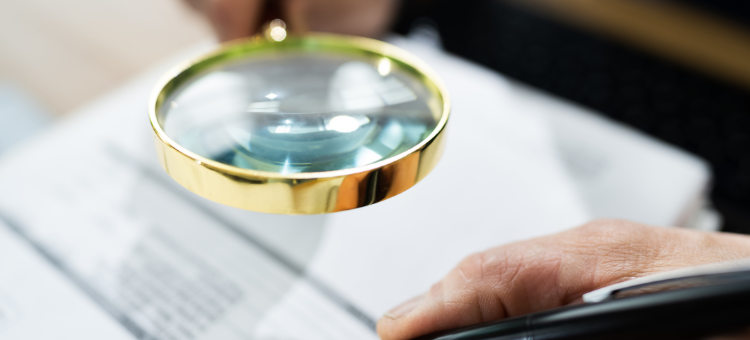Plagiarism Detection: Why and how to do it

Introduction
Nowadays, finding new content online is getting much harder. It is easier to generate work that is copied or AI generated, but it makes the content distant from the readers.
Plagiarism detection is necessary in all walks of life as it forces people to come up with new ideas. It is also important to catch plagiarism as we need to make sure what content is authentic and what’s not.
In this post, we will see why plagiarism detection is important, and how we can get it done.
So, without further ado, let’s get started!
What is Plagiarism?
Plagiarism is copying someone else’s content without taking their consent or permission. This is also referred to as an intellectual theft – stealing someone’s content for personal gains without mentioning the owner.
Most frequent examples of plagiarism are found in academia and digital content, where people are either repeatedly reusing their own work, or straight up stealing content.
The steal can sometimes be unintentional as people in academia forget to cite contributing work, resulting in plagiarism.
It can also be intentional as some content creators don’t add ‘credits’ to the original inspiration, resulting in plagiarism.
Thus, anything you copy from a person’s work without citing them is plagiarism.
Why Should You Check for Plagiarism?
Here’s why you should check for plagiarism:
-
Save Your Reputation:
Save your reputation if you are a professional. People will jump at you if they find something fishy with your content.
-
Avoid the Trouble:
Avoid getting caught in plagiarism checks placed in universities and institutions. Always look to secure your future.
-
Copied Work is Boring:
Copied work can be boring as people might have seen the content somewhere else.
-
Unfair Advantage:
Plagiarizers can gain merit that they don’t deserve, which can be detrimental for the outputs of an institution, or a society in general.
Let us take a look at all these points in a bit detail.
1. Reputation Is Spoilt
There are a number of cases where well-reputed people lost everything due to plagiarism. One such case would be of T. S. Elliot who wrote the famous poem “The Waste Land”.
Scholars found striking resemblances in Elliot’s work and James Joyce’s “Ulysses”. Although, this accusation was never legally proven, it definitely destroyed Elliot’s reputation.
People mercilessly dissected his content calling him a conman. And the supreme status that Elliot once enjoyed as a poet was gone forever.
Hence, to safeguard your reputation and career, it is always important to check for plagiarism.
2. Expulsion
In academics, plagiarism is a big crime. Students and professors alike, cannot copy anything from their previously published work. They are also not allowed to use someone else’s work without giving proper citations.
Use of citations are also limited to a certain degree, after which it is considered plagiarism. This is called a plagiarism limit – exceeding it can cause expulsion and blacklisting of students.
Teachers can lose their jobs for having publications with plagiarism beyond the set limit. Such are the risks of plagiarism and the reasons why you should always check for it.
3. Plagiarizing Leads to Inflated Percentiles
There are plenty of students who work tirelessly to achieve their goals. However, pupils with plagiarized homework gain extra marks in lesser time, completely ripping-off hardworking talent.
This situation aggravates the classroom as plagiarizing students continue to get full marks and they raise the class averages. This causes the genuine hardworking students to fail courses which they genuinely deserved to pass.
Thus, it is important for pedagogues and instructors to check for plagiarism, to appreciate genuine content and mark students based on their true merit.
The detection is also necessary to promote fair education, which can ultimately improve the quality of a country’s professional workforce.
How Can You Check for Plagiarism?
There are many ways in which you can detect plagiarism. Some are manual while others are automated methods. Let’s take a deep look on both of them:
1. Use of Search Engines
One of such techniques would be to copy a portion of text you wish to check for plagiarism, and paste it in any search engine.
If the search shows content with the same sentence structure, words, or expressions, then the content is likely copied.
Detecting plagiarized content manually is an uphill task and probably not a good idea. It will take you ages to skim through the content and you will end up wasting your time.
Hence, it is important to use faster methods for plagiarism detection to save our resources and be efficient in our work.
2. Use Online Plagiarism Detection Tools
For faster plagiarism detection use online plagiarism checkers. These AI-based automated tools are trained with a plethora of textual and image-based data. Hence, when a user pastes some content, the checkers instantly recognizes similarities.
We know that people are skeptical when it comes to checking plagiarism with online tools as they can sometimes be inaccurate. But, as long as you use strong tools like Plagiarism Checker by Prepostseo, there is nothing that you have to worry about.
Final Words
It is clear that we need to check plagiarism to avoid professional and academic problems. Also, such checks keep ideas genuine for societal growth and help appreciate authentic content.
Detecting plagiarism manually is a huge task and a waste of resources. Thus, to stop quick spreading plagiarism, we need to update our plagiarism detection techniques.
That’s it for this post!
We hope that you understood the reasons of detecting plagiarism, and the ways in which can do so. Till then, stay safe from the traps of copied content and goodbye!





Clear guidance on detection of Plagiariism. Promoting critical and creative thinking are critical processes to generate original ideas and arguments and thus limit the use of other people`s ideas.